Refinishing cultured marble countertops can be an effective and cost-efficient way to give your bathroom or kitchen a fresh, updated look. Cultured marble, which is a man-made product consisting of marble dust and resins, is a popular choice for countertops due to its affordability and durability. However, over time, these surfaces can become scratched, stained, or outdated in appearance. Rather than replacing them entirely, refinishing offers a viable alternative to restore their original beauty or even change their color and finish.
The process of refinishing cultured marble countertops involves several key steps, each of which requires careful attention to detail. The first step is thorough cleaning. Any dirt, grime, or residue on the countertop must be completely removed to ensure the new finish adheres properly. This typically involves using a non-abrasive cleaner and a scrub brush, followed by rinsing with water and drying the surface thoroughly. For stubborn stains, a mixture of baking soda and water can be used as a gentle abrasive.
Next, any scratches or chips in the cultured marble need to be repaired. This is usually done with a polyester resin filler that matches the color of the countertop. The filler is applied to the damaged areas, then smoothed and sanded once it has dried. Sanding is a critical step in the refinishing process, as it creates a smooth, even surface for the new finish to adhere to. It’s important to use fine-grit sandpaper and to sand in a circular motion to avoid creating new scratches.
After sanding, the countertop must be cleaned again to remove any dust or debris. This can be done with a damp cloth and a gentle cleaner. Once the surface is clean and dry, a primer is applied. The primer helps the new finish adhere better and provides a uniform base color. It’s essential to use a primer that is compatible with the refinishing topcoat you plan to use. Typically, a spray primer is recommended for an even application.

The actual refinishing involves applying a topcoat, which can be either a paint or a specialized refinishing product designed for cultured marble. If using paint, it’s important to choose one that is durable and suitable for bathroom or kitchen environments, such as an epoxy-based paint. The topcoat is usually applied in multiple thin layers, allowing each layer to dry completely before applying the next. This helps achieve a smooth, professional-looking finish.
Once the final layer of topcoat is applied, it must be allowed to cure fully. This can take several days, during which time the countertop should not be used. Curing is crucial for the durability of the new finish, as it allows the paint or refinishing product to harden and bond fully with the cultured marble surface. After the curing period, a clear sealant can be applied to add an extra layer of protection and enhance the countertop’s shine.
One of the key benefits of refinishing cultured marble countertops is the ability to change their appearance entirely. This can be especially appealing if the existing color or pattern is outdated or doesn’t match your current decor. By choosing different colors or finishes, you can customize the look of your countertops to better suit your personal style. For example, a high-gloss finish can create a sleek, modern look, while a matte finish can provide a more subtle, understated appearance.
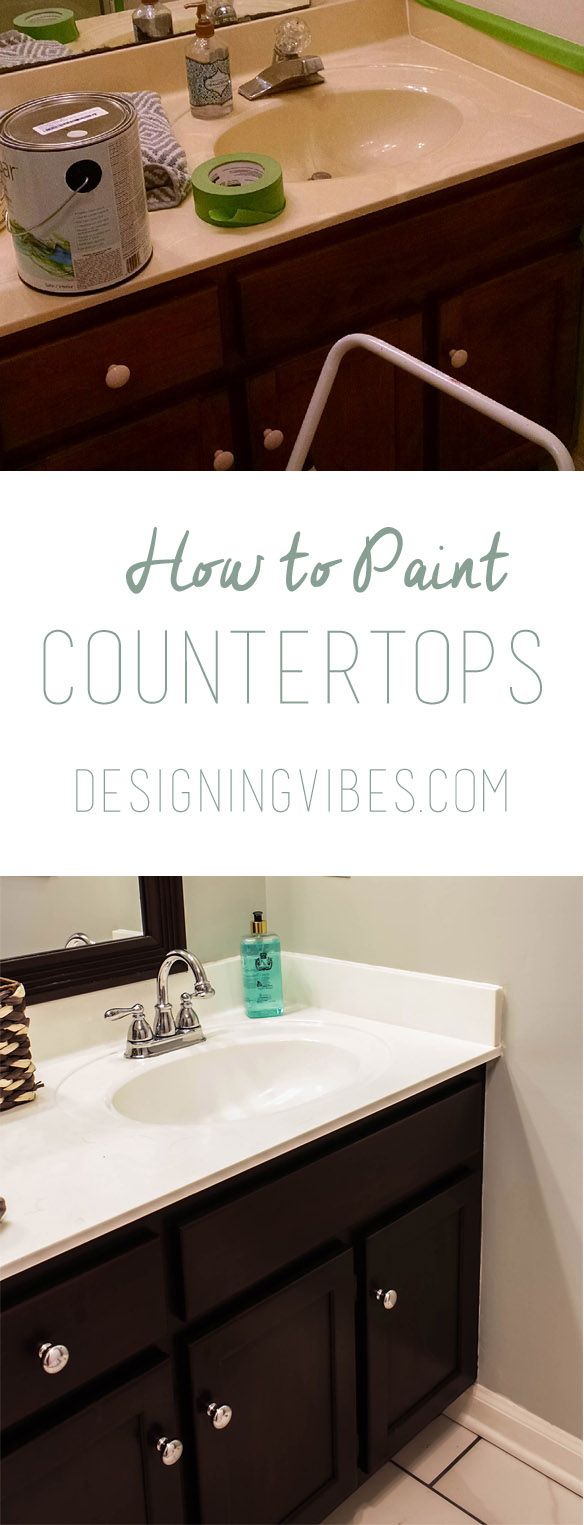
DIY refinishing of cultured marble countertops can be a rewarding project, but it requires patience and attention to detail. The materials and tools needed are readily available at most home improvement stores, and there are many tutorials and resources online to guide you through the process. However, it’s important to follow the instructions carefully and to take your time to achieve the best results.
While refinishing can significantly extend the life of your cultured marble countertops, it’s important to manage your expectations. The refinished surface may not be as durable as the original, especially in high-traffic areas. Regular maintenance and gentle cleaning can help preserve the new finish and keep your countertops looking their best. Avoid using abrasive cleaners or scrubbers, as these can damage the surface.
Another consideration is safety. Many of the products used in refinishing, such as primers and topcoats, contain volatile organic compounds (VOCs) that can be harmful if inhaled. It’s essential to work in a well-ventilated area and to wear appropriate protective gear, such as gloves and a respirator mask. Following the manufacturer’s safety guidelines will help ensure a safe and successful refinishing project.
The cost savings of refinishing compared to replacing cultured marble countertops can be significant. New countertops can be expensive, especially if you opt for high-end materials like natural stone. Refinishing allows you to achieve a fresh, updated look at a fraction of the cost. Additionally, refinishing is a more sustainable option, as it reduces waste and the environmental impact associated with manufacturing and transporting new countertops.

Refinishing cultured marble countertops also offers a great opportunity to experiment with different design trends and finishes without committing to a permanent change. For example, you might try a bold color or a faux stone finish to see how it looks in your space. If you decide you don’t like it, refinishing again is always an option, giving you the freedom to change your decor as often as you like.
Despite the benefits, refinishing cultured marble countertops is not without its challenges. Achieving a smooth, even finish can be difficult, especially for beginners. It requires careful preparation, patience, and a steady hand. Any mistakes made during the refinishing process, such as uneven sanding or applying the topcoat too thickly, can be difficult to fix and may result in an unsatisfactory finish.
Before starting a refinishing project, it’s a good idea to test the process on a small, inconspicuous area of the countertop. This allows you to practice the steps and see how the materials work without risking the appearance of the entire countertop. If you’re unsure about any part of the process, consider seeking advice from a professional or watching instructional videos to build your confidence.
Overall, DIY refinishing of cultured marble countertops can be a fulfilling and cost-effective way to update your kitchen or bathroom. With careful preparation, attention to detail, and a bit of patience, you can achieve a beautiful, durable finish that revitalizes your space.
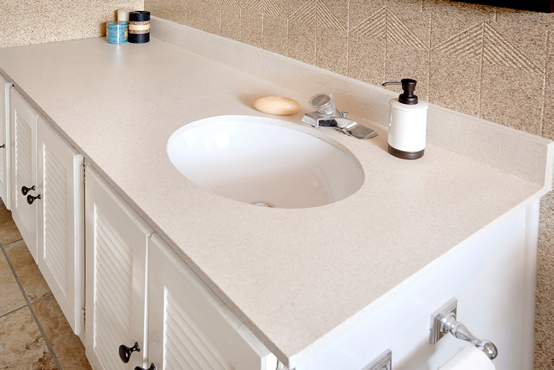
Common Mistakes to Avoid
One common mistake in refinishing cultured marble countertops is insufficient surface preparation. Skipping or inadequately performing steps like cleaning, sanding, and repairing can lead to poor adhesion of the new finish, resulting in peeling or chipping. Another mistake is using the wrong type of primer or topcoat. It’s essential to use products specifically designed for use on cultured marble to ensure durability and a professional finish. Applying the topcoat too thickly can cause runs, drips, and an uneven surface, so it’s important to apply multiple thin layers and allow adequate drying time between each.
Not allowing sufficient curing time is another frequent error. The curing period is critical for the finish to harden properly and achieve maximum durability. Using the countertops too soon can damage the new finish. Additionally, working in an area without proper ventilation or without using protective gear can pose health risks due to exposure to VOCs in primers and topcoats. Following all safety guidelines and recommendations is crucial to avoid health hazards.
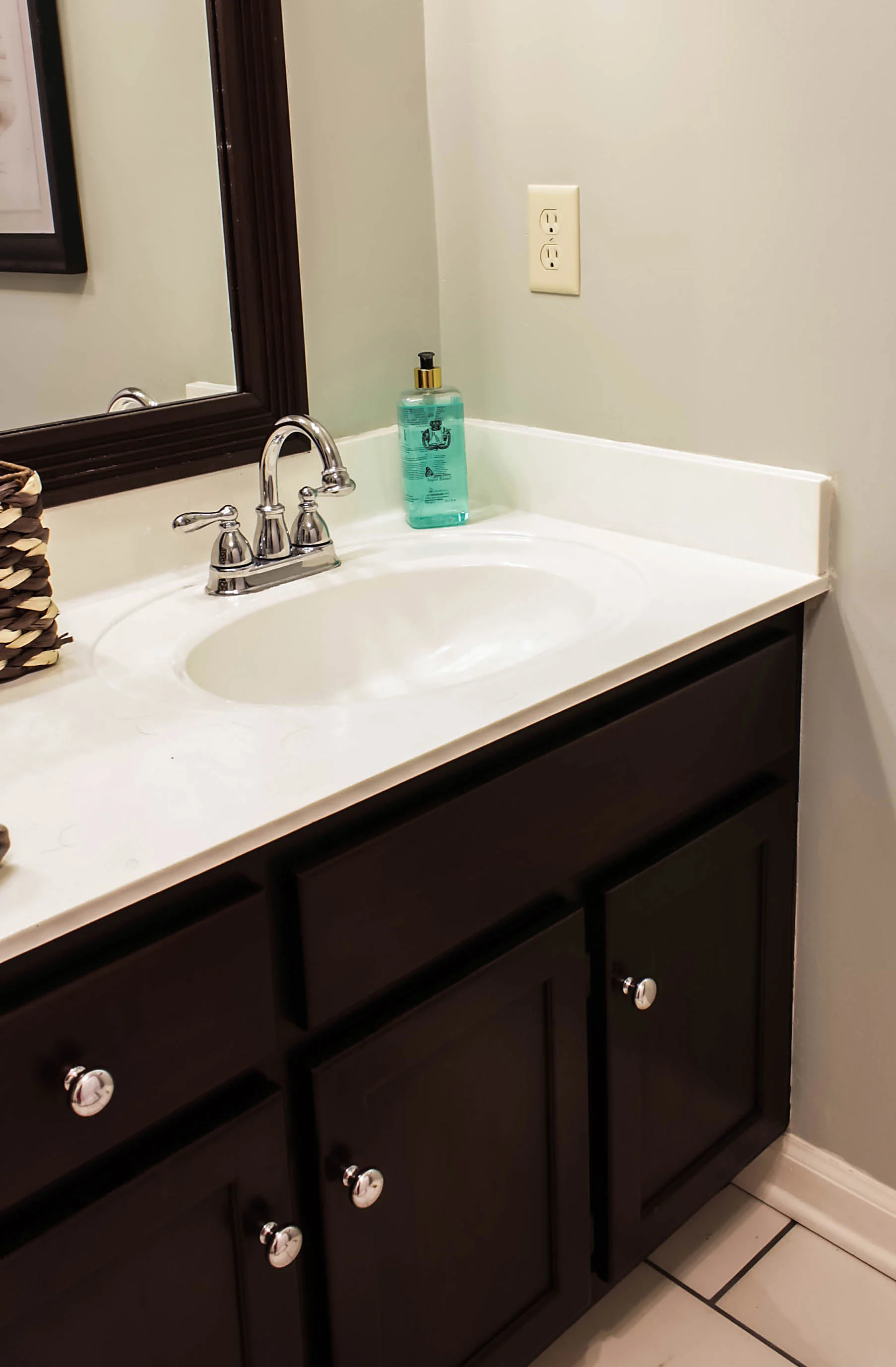 How long does the refinishing process take?
How long does the refinishing process take?
The refinishing process for cultured marble countertops typically takes several days to complete. The actual work of cleaning, sanding, repairing, and applying primer and topcoat can take a few hours over a couple of days, depending on the size and condition of the countertop. However, it’s crucial to allow each layer of primer and topcoat to dry thoroughly before applying the next, which can add additional time. The most time-consuming part is the curing period, which can take several days, during which the countertop should not be used.
What materials do I need for refinishing cultured marble countertops?
To refinish cultured marble countertops, you will need several materials, including a non-abrasive cleaner, fine-grit sandpaper, polyester resin filler (for repairing chips and scratches), a primer compatible with cultured marble, and a durable topcoat such as an epoxy-based paint or specialized refinishing product. Additional tools include a scrub brush, damp cloths, protective gloves, a respirator mask, and possibly a spray primer for even application. These materials and tools are typically available at home improvement stores.
Can I change the color of my cultured marble countertop through refinishing?
Yes, one of the benefits of refinishing cultured marble countertops is the ability to change their color. By choosing different primers and topcoats, you can customize the appearance of your countertops to better match your decor. This can include a wide range of colors and finishes, from high-gloss to matte. Changing the color can give your kitchen or bathroom a completely new look without the expense and hassle of replacing the countertops.
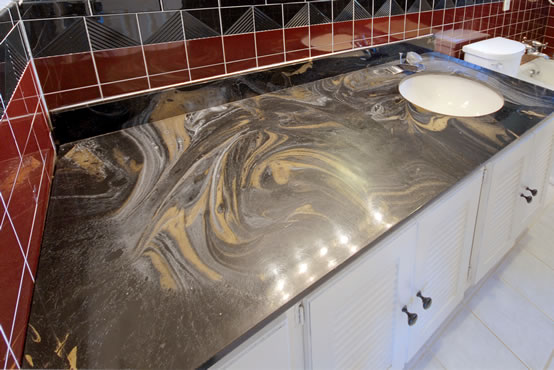 How do I maintain my refinished countertops?
How do I maintain my refinished countertops?
Maintaining refinished cultured marble countertops involves gentle cleaning with mild detergent and water, avoiding abrasive cleaners and scrubbers that can damage the new finish. It’s important to reseal the surface periodically if you use a sealant as the final step. Additionally, using cutting boards and trivets can help protect the countertop from scratches and heat damage. Regular maintenance will help preserve the appearance and durability of the refinished surface.
Is refinishing a durable solution for cultured marble countertops?
Refinishing can significantly extend the life of cultured marble countertops, but the new finish may not be as durable as the original surface, especially in high-traffic areas. Proper preparation, application, and curing are essential for achieving the best results. While refinished countertops can last for several years with proper care, they may require occasional touch-ups or refinishing again over time to maintain their appearance and functionality.
Are there any safety precautions I should take during the refinishing process?
Yes, safety is a crucial aspect of the refinishing process. Many of the products used, such as primers and topcoats, contain volatile organic compounds (VOCs) that can be harmful if inhaled. It’s essential to work in a well-ventilated area and wear appropriate protective gear, including gloves and a respirator mask. Following the manufacturer’s safety guidelines and recommendations will help ensure a safe and successful refinishing project, minimizing health risks and ensuring the best results.
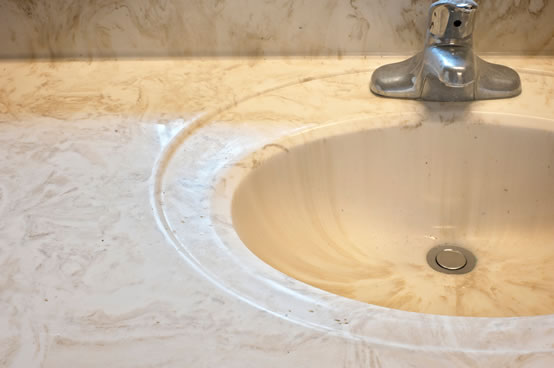
How to Resurface Countertops

How to Paint Cultured Marble Countertops – DIY Tutorial
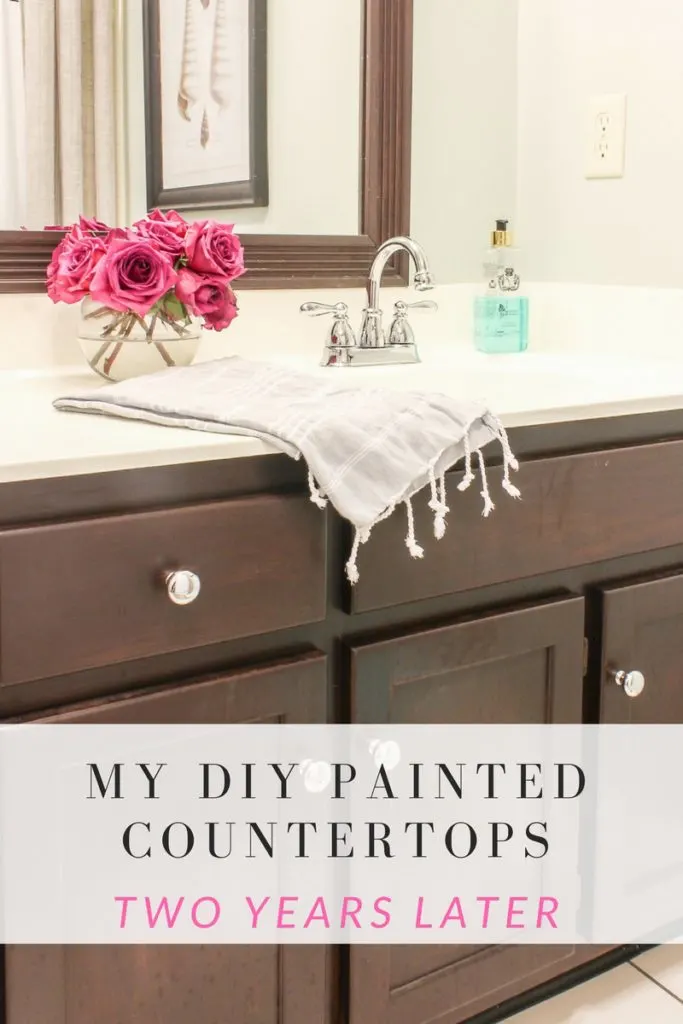
Refinishing the Bathroom Vanity Top: Part 1 Best bathroom

A Penny for your Thoughts A Sunkist for mine Kitchen

Related articles:


 Refinishing cultured marble countertops also offers a great opportunity to experiment with different design trends and finishes without committing to a permanent change. For example, you might try a bold color or a faux stone finish to see how it looks in your space. If you decide you don’t like it, refinishing again is always an option, giving you the freedom to change your decor as often as you like.
Despite the benefits, refinishing cultured marble countertops is not without its challenges. Achieving a smooth, even finish can be difficult, especially for beginners. It requires careful preparation, patience, and a steady hand. Any mistakes made during the refinishing process, such as uneven sanding or applying the topcoat too thickly, can be difficult to fix and may result in an unsatisfactory finish.
Before starting a refinishing project, it’s a good idea to test the process on a small, inconspicuous area of the countertop. This allows you to practice the steps and see how the materials work without risking the appearance of the entire countertop. If you’re unsure about any part of the process, consider seeking advice from a professional or watching instructional videos to build your confidence.
Overall, DIY refinishing of cultured marble countertops can be a fulfilling and cost-effective way to update your kitchen or bathroom. With careful preparation, attention to detail, and a bit of patience, you can achieve a beautiful, durable finish that revitalizes your space.
Refinishing cultured marble countertops also offers a great opportunity to experiment with different design trends and finishes without committing to a permanent change. For example, you might try a bold color or a faux stone finish to see how it looks in your space. If you decide you don’t like it, refinishing again is always an option, giving you the freedom to change your decor as often as you like.
Despite the benefits, refinishing cultured marble countertops is not without its challenges. Achieving a smooth, even finish can be difficult, especially for beginners. It requires careful preparation, patience, and a steady hand. Any mistakes made during the refinishing process, such as uneven sanding or applying the topcoat too thickly, can be difficult to fix and may result in an unsatisfactory finish.
Before starting a refinishing project, it’s a good idea to test the process on a small, inconspicuous area of the countertop. This allows you to practice the steps and see how the materials work without risking the appearance of the entire countertop. If you’re unsure about any part of the process, consider seeking advice from a professional or watching instructional videos to build your confidence.
Overall, DIY refinishing of cultured marble countertops can be a fulfilling and cost-effective way to update your kitchen or bathroom. With careful preparation, attention to detail, and a bit of patience, you can achieve a beautiful, durable finish that revitalizes your space.

 How long does the refinishing process take?
The refinishing process for cultured marble countertops typically takes several days to complete. The actual work of cleaning, sanding, repairing, and applying primer and topcoat can take a few hours over a couple of days, depending on the size and condition of the countertop. However, it’s crucial to allow each layer of primer and topcoat to dry thoroughly before applying the next, which can add additional time. The most time-consuming part is the curing period, which can take several days, during which the countertop should not be used.
What materials do I need for refinishing cultured marble countertops?
To refinish cultured marble countertops, you will need several materials, including a non-abrasive cleaner, fine-grit sandpaper, polyester resin filler (for repairing chips and scratches), a primer compatible with cultured marble, and a durable topcoat such as an epoxy-based paint or specialized refinishing product. Additional tools include a scrub brush, damp cloths, protective gloves, a respirator mask, and possibly a spray primer for even application. These materials and tools are typically available at home improvement stores.
Can I change the color of my cultured marble countertop through refinishing?
Yes, one of the benefits of refinishing cultured marble countertops is the ability to change their color. By choosing different primers and topcoats, you can customize the appearance of your countertops to better match your decor. This can include a wide range of colors and finishes, from high-gloss to matte. Changing the color can give your kitchen or bathroom a completely new look without the expense and hassle of replacing the countertops.
How long does the refinishing process take?
The refinishing process for cultured marble countertops typically takes several days to complete. The actual work of cleaning, sanding, repairing, and applying primer and topcoat can take a few hours over a couple of days, depending on the size and condition of the countertop. However, it’s crucial to allow each layer of primer and topcoat to dry thoroughly before applying the next, which can add additional time. The most time-consuming part is the curing period, which can take several days, during which the countertop should not be used.
What materials do I need for refinishing cultured marble countertops?
To refinish cultured marble countertops, you will need several materials, including a non-abrasive cleaner, fine-grit sandpaper, polyester resin filler (for repairing chips and scratches), a primer compatible with cultured marble, and a durable topcoat such as an epoxy-based paint or specialized refinishing product. Additional tools include a scrub brush, damp cloths, protective gloves, a respirator mask, and possibly a spray primer for even application. These materials and tools are typically available at home improvement stores.
Can I change the color of my cultured marble countertop through refinishing?
Yes, one of the benefits of refinishing cultured marble countertops is the ability to change their color. By choosing different primers and topcoats, you can customize the appearance of your countertops to better match your decor. This can include a wide range of colors and finishes, from high-gloss to matte. Changing the color can give your kitchen or bathroom a completely new look without the expense and hassle of replacing the countertops.
 How do I maintain my refinished countertops?
Maintaining refinished cultured marble countertops involves gentle cleaning with mild detergent and water, avoiding abrasive cleaners and scrubbers that can damage the new finish. It’s important to reseal the surface periodically if you use a sealant as the final step. Additionally, using cutting boards and trivets can help protect the countertop from scratches and heat damage. Regular maintenance will help preserve the appearance and durability of the refinished surface.
Is refinishing a durable solution for cultured marble countertops?
Refinishing can significantly extend the life of cultured marble countertops, but the new finish may not be as durable as the original surface, especially in high-traffic areas. Proper preparation, application, and curing are essential for achieving the best results. While refinished countertops can last for several years with proper care, they may require occasional touch-ups or refinishing again over time to maintain their appearance and functionality.
Are there any safety precautions I should take during the refinishing process?
Yes, safety is a crucial aspect of the refinishing process. Many of the products used, such as primers and topcoats, contain volatile organic compounds (VOCs) that can be harmful if inhaled. It’s essential to work in a well-ventilated area and wear appropriate protective gear, including gloves and a respirator mask. Following the manufacturer’s safety guidelines and recommendations will help ensure a safe and successful refinishing project, minimizing health risks and ensuring the best results.
How do I maintain my refinished countertops?
Maintaining refinished cultured marble countertops involves gentle cleaning with mild detergent and water, avoiding abrasive cleaners and scrubbers that can damage the new finish. It’s important to reseal the surface periodically if you use a sealant as the final step. Additionally, using cutting boards and trivets can help protect the countertop from scratches and heat damage. Regular maintenance will help preserve the appearance and durability of the refinished surface.
Is refinishing a durable solution for cultured marble countertops?
Refinishing can significantly extend the life of cultured marble countertops, but the new finish may not be as durable as the original surface, especially in high-traffic areas. Proper preparation, application, and curing are essential for achieving the best results. While refinished countertops can last for several years with proper care, they may require occasional touch-ups or refinishing again over time to maintain their appearance and functionality.
Are there any safety precautions I should take during the refinishing process?
Yes, safety is a crucial aspect of the refinishing process. Many of the products used, such as primers and topcoats, contain volatile organic compounds (VOCs) that can be harmful if inhaled. It’s essential to work in a well-ventilated area and wear appropriate protective gear, including gloves and a respirator mask. Following the manufacturer’s safety guidelines and recommendations will help ensure a safe and successful refinishing project, minimizing health risks and ensuring the best results.




 Related articles:
Related articles: